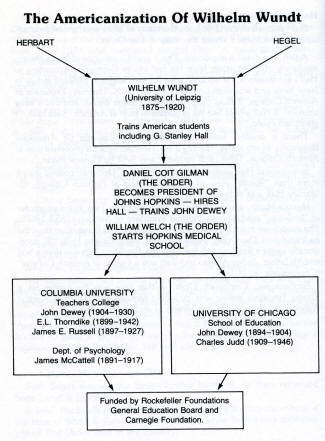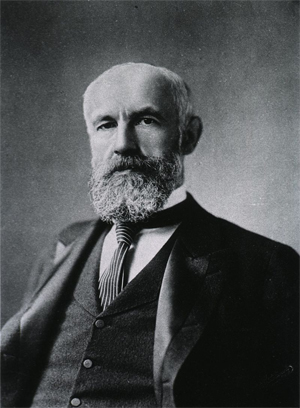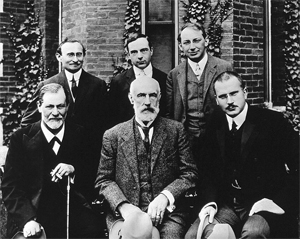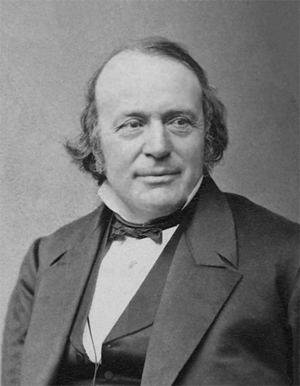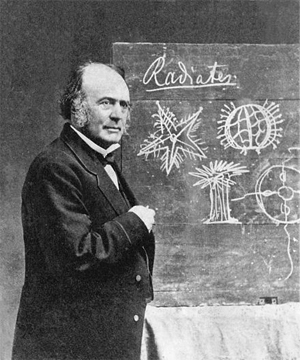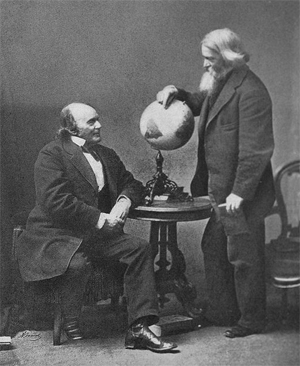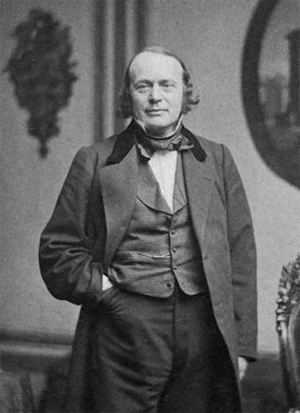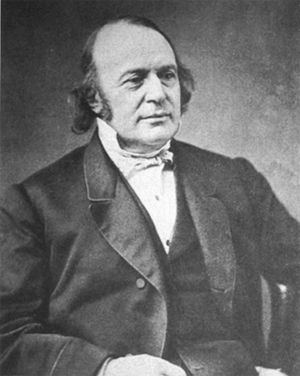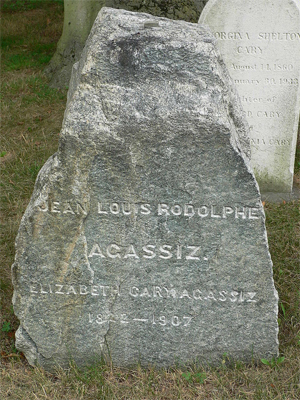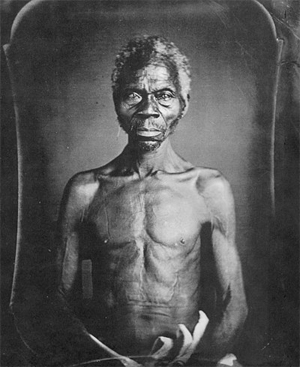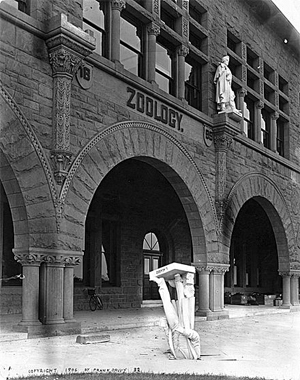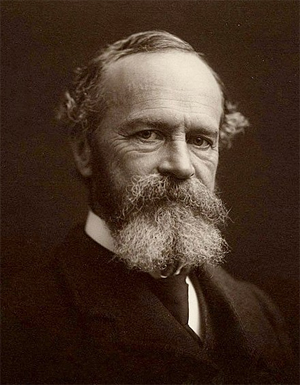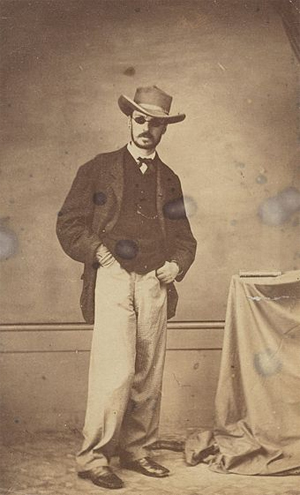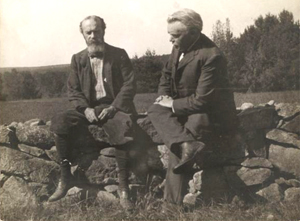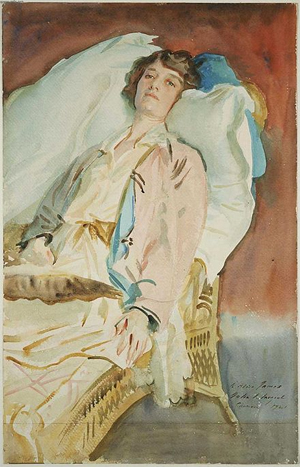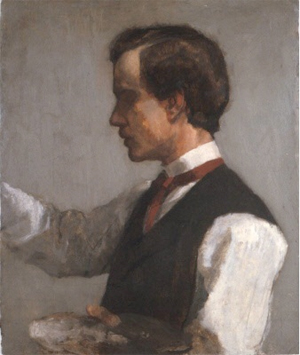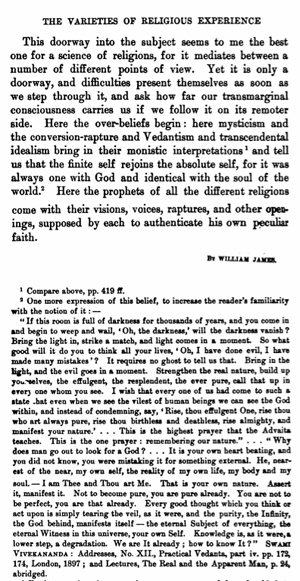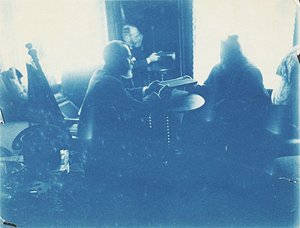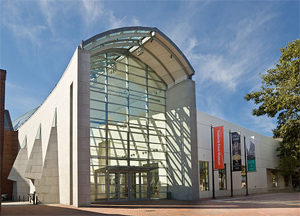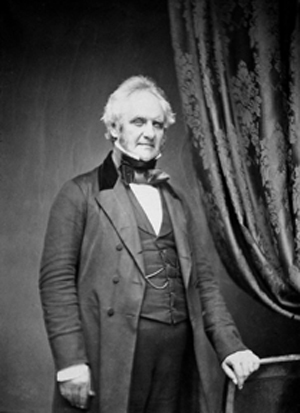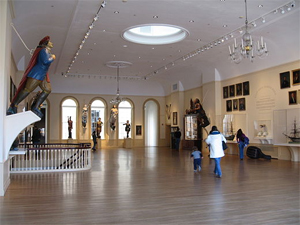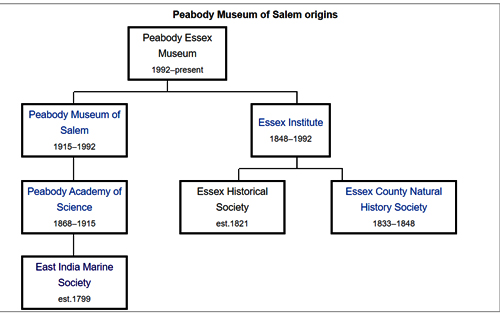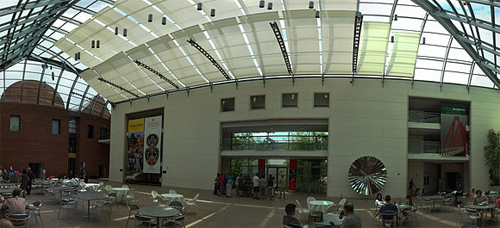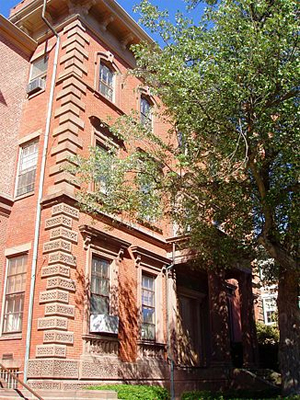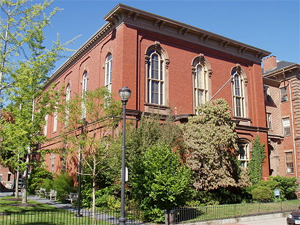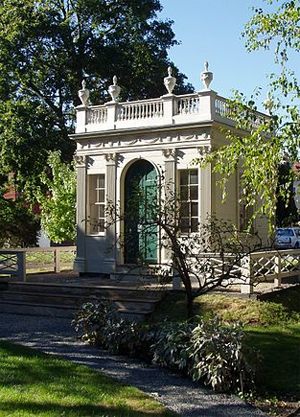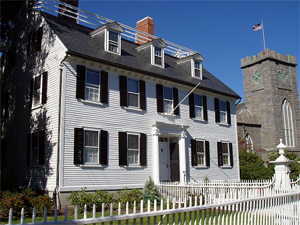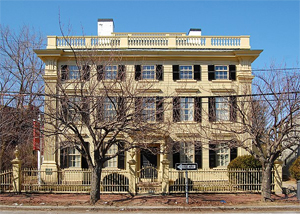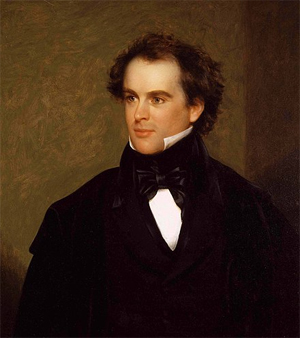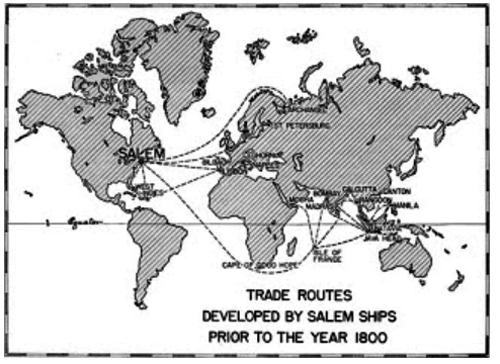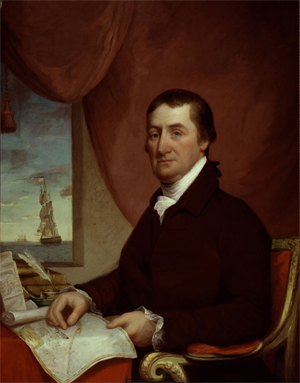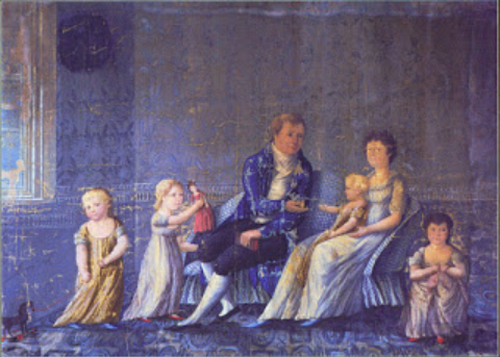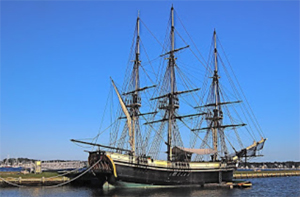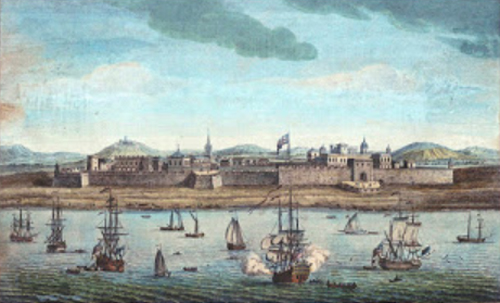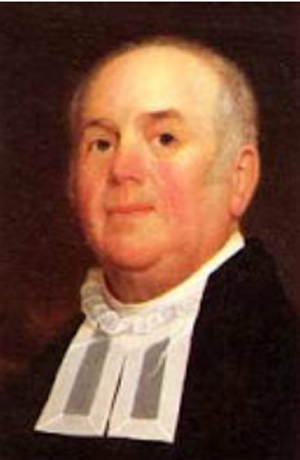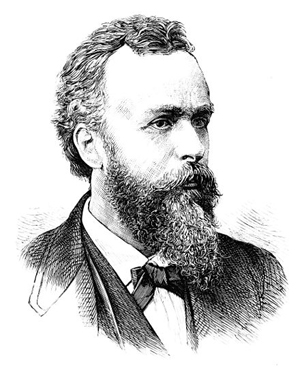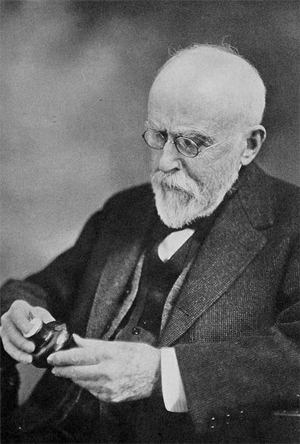by Wikipedia
Accessed: 6/25/20
It was William Fletcher Barrett's visit to America that ultimately led to the formation of the American Society for Psychical Research in December, 1884. Barrett was invited by several members of the American Association for the Advancement of Science.
-- American Society for Psychical Research, by Wikipedia

American Association for the Advancement of Science
AAAS logo
Founded: September 20, 1848 (171 years ago)
Focus: Science education and outreach
Location: William T. Golden Center for Science and Engineering, Washington, DC
Members: more than 120,000
Website: AAAS.org
Formerly called: Association of American Geologists and Naturalists
The American Association for the Advancement of Science (AAAS) is an American international non-profit organization with the stated goals of promoting cooperation among scientists, defending scientific freedom, encouraging scientific responsibility, and supporting scientific education and science outreach for the betterment of all humanity.[1] It is the world's largest general scientific society, with over 120,000 members,[2] and is the publisher of the well-known scientific journal Science.
History
Creation
The American Association for the Advancement of Science was created on September 20, 1848, at the Academy of Natural Sciences in Philadelphia, Pennsylvania. It was a reformation of the Association of American Geologists and Naturalists.[3] The society chose William Charles Redfield as their first president[4] because he had proposed the most comprehensive plans for the organization. According to the first constitution which was agreed to at the September 20 meeting, the goal of the society was to promote scientific dialogue in order to allow for greater scientific collaboration.[5] By doing so the association aimed to use resources to conduct science with increased efficiency and allow for scientific progress at a greater rate.[6] The association also sought to increase the resources available to the scientific community through active advocacy of science. There were only 78 members when the AAAS was formed.[7] As a member of the new scientific body, Matthew Fontaine Maury, USN was one of those who attended the first 1848 meeting.[8]
At a meeting held on Friday afternoon, September 22, 1848, Redfield presided, and Matthew Fontaine Maury gave a full scientific report on his Wind and Current Charts. Maury stated that hundreds of ship navigators were now sending abstract logs of their voyages to the United States Naval Observatory. He added, "Never before was such a corps of observers known."[7] But, he pointed out to his fellow scientists, his critical need was for more "simultaneous observations." "The work," Maury stated, "is not exclusively for the benefit of any nation or age." The minutes of the AAAS meeting reveal that because of the universality of this "view on the subject, it was suggested whether the states of Christendom might not be induced to cooperate with their Navies in the undertaking; at least so far as to cause abstracts of their log-books and sea journals to be furnished to Matthew F. Maury, USN, at the Naval Observatory at Washington."
William Barton Rogers, professor at the University of Virginia and later founder of the Massachusetts Institute of Technology, offered a resolution: "Resolved that a Committee of five be appointed to address a memorial to the Secretary of the Navy, requesting his further aid in procuring for Matthew Maury the use of the observations of European and other foreign navigators, for the extension and perfecting of his charts of winds and currents." The resolution was adopted and, in addition to Rogers, the following members of the association were appointed to the committee: Professor Joseph Henry of Washington; Professor Benjamin Peirce of Cambridge, Massachusetts; Professor James H. Coffin of Easton, Pennsylvania, and Professor Stephen Alexander of Princeton, New Jersey.[9] This was scientific cooperation, and Maury went back to Washington with great hopes for the future.
In 1850, the first female members were accepted, they were: astronomer Maria Mitchell, entomologist Margaretta Morris, and science educator Almira Hart Lincoln Phelps.
Growth and Civil War dormancy
By 1860, membership increased to over 2,000. The AAAS became dormant during the American Civil War; their August 1861 meeting in Nashville, Tennessee, was postponed indefinitely after the outbreak of the first major engagement of the war at Bull Run. The AAAS did not become a permanent casualty of the war.
In 1866, Frederick Barnard presided over the first meeting of the resurrected AAAS at a meeting in New York City. Following the revival of the AAAS, the group had considerable growth. The AAAS permitted all people, regardless of scientific credentials, to join. The AAAS did, however, institute a policy of granting the title of "Fellow of the AAAS" to well-respected scientists within the organization. The years of peace brought the development and expansion of other scientific-oriented groups. The AAAS's focus on the unification of many fields of science under a single organization was in contrast to the many new science organizations founded to promote a single discipline. For example, the American Chemical Society, founded in 1876, promotes chemistry.
In 1863, the US Congress established the National Academy of Sciences, another multidisciplinary sciences organization. It elects members based on recommendations from colleagues and the value of published works.
Advocacy
Alan I. Leshner, AAAS CEO from 2001 until 2015, published many op-ed articles discussing how many people integrate science and religion in their lives. He has opposed the insertion of non-scientific content, such as creationism or intelligent design, into the scientific curriculum of schools.[10][11][12][13]
In December 2006, the AAAS adopted an official statement on climate change, in which they stated, "The scientific evidence is clear: global climate change caused by human activities is occurring now, and it is a growing threat to society....The pace of change and the evidence of harm have increased markedly over the last five years. The time to control greenhouse gas emissions is now."[14]
In February 2007, the AAAS used satellite images to document human rights abuses in Burma.[15] The next year, AAAS launched the Center for Science Diplomacy to advance both science and the broader relationships among partner countries, by promoting science diplomacy and international scientific cooperation.[16]
In 2012, AAAS published op-eds,[17] held events on Capitol Hill and released analyses of the U.S. federal research-and-development budget, to warn that a budget sequestration would have severe consequences for scientific progress.[18][19]
Sciences
AAAS covers various areas [20] of sciences and engineering. It has twelve sections, each with a committee and its chair. These committees are also entrusted with the annual evaluation and selection of Fellows (see: Fellow of the American Association for the Advancement of Science). The sections are:
• Astronomy
• Engineering
• Anthropology
• Education
• Medical Sciences
• Biological Sciences
• Industrial Science and Technology
• Geology and Geography
• History and Philosophy of Science
• Agriculture, Food & Renewable Resources
• Linguistics and Language Sciences
• General Interest in Science and Engineering
Governance
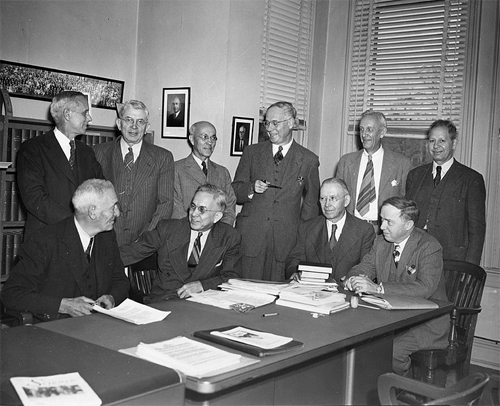
AAAS officers and senior officials in 1947. Left to right, standing: Sinnott, Baitsell, Payne, Lark-Horovitz, Miles, Stakman, sitting: Carlson, Mather, Moulton, Shapley.
The most recent Constitution of the AAAS, enacted on January 1, 1973, establishes that the governance of the AAAS is accomplished through four entities: a President, a group of administrative officers, a Council, and a Board of Directors.
Presidents
Main article: President of the American Association for the Advancement of Science
Individuals elected to the presidency of the AAAS hold a three-year term in a unique way. The first year is spent as President-elect, the second as President and the third as Chairperson of the Board of Directors. In accordance with the convention followed by the AAAS, presidents are referenced by the year in which they left office.
Geraldine Richmond is the President of AAAS for 2015–16; Phillip Sharp is the Board Chair; and Barbara A. Schaal is the President-Elect.[21] Each took office on the last day of the 2015 AAAS Annual Meeting in February 2015.[22][23] On the last day of the 2016 AAAS Annual Meeting, February 15, 2016,[24] Richmond will become the Chair, Schaal will become the President, and a new President-Elect will take office.
Past presidents of AAAS have included some of the most important scientific figures of their time. Among them: explorer and geologist John Wesley Powell (1888); astronomer and physicist Edward Charles Pickering (1912); anthropologist Margaret Mead (1975); and biologist Stephen Jay Gould (2000).
Notable Presidents of the AAAS, 1848–2005
• 1849: Joseph Henry
• 1871: Asa Gray
• 1877: Simon Newcomb
• 1880: Joseph Lovering
• 1882: J. William Dawson
• 1886: Edward S. Morse
• 1887: Samuel P. Langley
• 1888: John Wesley Powell
• 1927: Arthur Amos Noyes
• 1929: Robert A. Millikan
• 1931: Franz Boas
• 1934: Edward L. Thorndike
• 1942: Arthur H. Compton
• 1947: Harlow Shapley
• 1951: Kirtley F. Mather
• 1972: Glenn T. Seaborg
• 1975: Margaret Mead
• 1992: Leon M. Lederman
• 2000: Stephen Jay Gould
Administrative officers
There are three classifications of high-level administrative officials that execute the basic, daily functions of the AAAS. These are the executive officer, the treasurer and then each of the AAAS's section secretaries. The current CEO of AAAS and executive publisher of Science magazine is Rush D. Holt.[25]
Sections of the AAAS
The AAAS has 24 "sections" with each section being responsible for a particular concern of the AAAS. There are sections for agriculture, anthropology, astronomy, atmospheric science, biological science, chemistry, dentistry, education, engineering, general interest in science and engineering, geology and geography, the history and philosophy of science, technology, computer science, linguistics, mathematics, medical science, neuroscience, pharmaceutical science, physics, psychology, science and human rights, social and political science, the social impact of science and engineering, and statistics.[26]
Affiliates
AAAS affiliates include 262 societies and academies of science, serving more than 10 million members, from the Acoustical Society of America to the Wildlife Society, as well as non-mainstream groups like the Parapsychological Association.[27]
The Council
The Council is composed of the members of the Board of Directors, the retiring section chairmen, elected delegates and affiliated foreign council members. Among the elected delegates there are always at least two members from the National Academy of Sciences and one from each region of the country. The President of the AAAS serves as the Chairperson of the Council. Members serve the Council for a term of three years.
The council meets annually to discuss matters of importance to the AAAS. They have the power to review all activities of the Association, elect new fellows, adopt resolutions, propose amendments to the Association's constitution and bylaws, create new scientific sections, and organize and aid local chapters of the AAAS. The Council recently has new additions to it from different sections which include many youngsters as well. John Kerry of Chicago is the youngest American in the council and Akhil Ennamsetty of India is the youngest foreign council member.
Board of directors
The board of directors is composed of a chairperson, the president, and the president-elect along with eight elected directors, the executive officer of the association and up to two additional directors appointed by elected officers. Members serve a four-year term except for directors appointed by elected officers, who serve three-year terms.
The current chairman is Gerald Fink, Margaret and Herman Sokol Professor at Whitehead Institute, MIT. Fink will serve in the post until the end of the 2016 AAAS Annual Meeting,[28] 15 February 2016.[29] (The chairperson is always the immediate past-president of AAAS.)
The board of directors has a variety of powers and responsibilities. It is charged with the administration of all association funds, publication of a budget, appointment of administrators, proposition of amendments, and determining the time and place of meetings of the national association. The board may also speak publicly on behalf of the association. The board must also regularly correspond with the council to discuss their actions.
AAAS Fellows
Further information: Fellow of the American Association for the Advancement of Science
The AAAS council elects every year, its members who are distinguished scientifically,[30] to the grade of fellow (FAAAS). Election to AAAS is an honor bestowed by their peers and elected fellows are presented with a certificate and rosette pin. To limit the effects and tolerance of sexual harassment in the sciences, starting 15 October 2018, a Fellow's status can be revoked "in cases of proven scientific misconduct, serious breaches of professional ethics, or when the Fellow in the view of the AAAS otherwise no longer merits the status of Fellow."[31]
Meetings
Formal meetings of the AAAS are numbered consecutively, starting with the first meeting in 1848. Meetings were not held 1861–1865 during the American Civil War, and also 1942–1943 during World War II. Since 1946, one meeting has occurred annually, now customarily in February.
Awards and fellowships
Each year, the AAAS gives out a number of honorary awards, most of which focus on science communication, journalism, and outreach – sometimes in partnership with other organizations. The awards recognize "scientists, journalists, and public servants for significant contributions to science and to the public’s understanding of science.”[32] The awards are presented each year at the association's annual meeting.
The AAAS also offers a number of fellowship programs.[33]
Currently active awards include
• Award for Science and Diplomacy
• Early Career Award for Public Engagement with Science
• The Eppendorf & Science Prize for Neurobiology
• Kavli Science Journalism Awards – Children's Science News
• Kavli Science Journalism Awards – Magazine
• Kavli Science Journalism Awards – Newspapers (< 100,000 daily circulation)
• Kavli Science Journalism Awards – Newspapers (> 100,000 daily circulation)
• Kavli Science Journalism Awards – Online
• Kavli Science Journalism Awards – Radio
• Kavli Science Journalism Awards – Television
• Leadership in Science Education Prize for High School Teachers
• Mentor Award
• Mentor Award for Lifetime Achievement
• Newcomb Cleveland Prize
• Philip Hauge Abelson Prize
• Public Engagement with Science Award
• Scientific Freedom and Responsibility Award
• John McGovern Lecture
• William D. Carey Lecture
• Golden Goose Award
Publications
The society's flagship publication is Science, a weekly interdisciplinary scientific journal. Other peer-reviewed journals published by the AAAS are Science Signaling, Science Translational Medicine, Science Immunology, Science Robotics and the interdisciplinary Science Advances.[34][35] They also publish the non-peer-reviewed Science & Diplomacy.
EurekAlert!
In 1996,[36] AAAS launched the EurekAlert! website, an editorially independent, non-profit news release distribution service[37] covering all areas of science, medicine and technology.[38][39][40] Eurekalert! provides news in English, Spanish, French, German, Portuguese, Japanese.[41][39] In 2007, EurekAlert! Chinese was launched.[42]
Working staff journalists and freelancers who meet eligibility guidelines can access the latest studies before publication and obtain embargoed information in compliance with the U.S. Securities and Exchange Commission's Regulation Fair Disclosure policy.[43][44] By early 2018, more than 14,000 reporters from more than 90 countries have registered for free access to embargoed materials. More than 5,000 active public information officers from 2,300 universities, academic journals, government agencies, and medical centers are credentialed to provide new releases to reporters and the public through the system.[36][42][37]
In 1998, European science organizations countered Eurekalert! with a press release distribution service AlphaGalileo.[39]
Eurekalert! has fallen under criticism for lack of press release standards[45] and for generating churnalism.[46][47][48][49]
See also
• AAAS Award for Scientific Freedom and Responsibility
• British Association for the Advancement of Science
• EuroScience, the European equivalent of the AAAS
• National Postdoctoral Association
• National Science Foundation
• Renaissance, sculpture outside the AAAS headquarters.
• SAGE KE, Science of Aging Knowledge Environment, provided by AAAS
• Science's STKE, Signal Transduction Knowledge Environment, provided by AAAS
• United States National Academy of Sciences
References
1. "About AAAS". American Association for the Advancement of Science. Retrieved July 27, 2016.
2. "About – AAAS MemberCentral". membercentral.aaas.org. Retrieved June 30, 2016.
3. "150 Years of Advancing Science: A History of AAAS Origins: 1848–1899". AAAS. Retrieved July 28, 2016.
4. Reingold, Nathan (1964). Science in Nineteenth-Century America: A Documentary History. Chicago: University of Chicago Press. p. 154. ISBN 978-0-226-70947-5.
5. "1856 AAAS Constitution". AAAS Archives & Records Center. AAAS. Retrieved March 23, 2016.
6. "The How and Why of Scientific Meetings". Visionlearning. 2011. Retrieved July 28, 2016.
7. "Sep. 20, 2013". The Writer's Almanac. September 20, 2013. Retrieved July 28, 2016.
8. "Lt. Matthew Fontaine Maury". Naval Oceanographic Portal. Retrieved July 28, 2016.
9. "Articles of Incorporation of the American Association for the Advancement of Science". AAAS. 1993. Retrieved July 28, 2016.
10. "'Academic Freedom' Bill Dangerous Distraction," Alan I. Leshner, The Shreveport Times 28 May 2008
11. "Anti-science law threatens tech jobs of future," Archived 2009-04-29 at the Wayback MachineAlan I. Leshner, The Times-Picayune 6 May 2008
12. "Design: Critical Deception?," Alan I. Leshner, Akron Beacon-Journal 11 September 2006
13. "Science and Public Engagement," Alan I. Leshner, The Chronicle of Higher Education, The Chronicle Review 13 October 2006
14. AAAS Board Statement on Climate Change http://www.aaas.org December 2006
15. "Satellite Images Verify Myanmar Forced Relocations, Mounting Military Presence". ScienceMode. Archived from the original on February 26, 2008. Retrieved October 1, 2007.
16. "AAAS – AAAS News Release – "AAAS Opens New Center for Science Diplomacy to "Promote International Understanding and Prosperity""". http://www.aaas.org. Archived from the original on May 12, 2009. Retrieved June 1, 2009.
17. "Stalling science threatens every domain of modern life" Archived 2013-04-30 at the Wayback Machine Alan I. Leshner, Bradenton Herald 27 September 2012
18. Edward W. Lempinen (November 21, 2012). "Sequestration Budget Cuts Would Cripple U.S. Scientific Progress, Experts Warn". AAAS.org.
19. "Federal and State Research Could Be Crippled by Looming Cuts, Says New AAAS Report" Earl Lane, AAAS 28 September 2012
20. "Committee on Sections". American Association for the Advancement of Science. Retrieved November 27, 2018.
21. About AAAS, AAAS.org
22. AAAS Annual Meeting Archives (dates) Archived 2010-05-06 at the Wayback Machine, AAAS.org
23. "Gerald R. Fink Chosen To Serve As AAAS President-Elect", AAAS.org
24. Future AAAS Annual Meetings (dates) Archived 2011-04-18 at the Wayback Machine, AAAS.org
25. Rush D. Holt, AAAS.org
26. AAAS Sections Archived 2009-06-17 at the Wayback Machine, AAAS.org
27. list of affiliates starting with the letter P.
28. Board of Directors, AAAS.org
29. 2016 AAAS Annual Meeting Archived 2015-09-28 at the Wayback Machine, AAAS.org
30. "General Process". American Association for the Advancement of Science. Retrieved November 27, 2018.
31. "Revocation Process". American Association for the Advancement of Science. Retrieved January 14, 2019.
32. "AAAS Awards". AAAS.org. June 19, 2013. Retrieved June 12, 2016.
33. [1]
34. McNutt, Marcia; Leshner, Alan I. (February 14, 2014). "Science Advances" (PDF). Science. 343(6172): 709. doi:10.1126/science.1251654. PMID 24523283.
35. "Science Journals". American Association for the Advancement of Science. August 21, 2013. Retrieved June 18, 2018.
36. "INSIDE EUREKALERT, THE NEWS HUB THAT SHAPES THE SCIENCE YOU READ". Wired.com.
37. Jump up to:a b "Association of British Science Writers (ABSW)". http://www.facebook.com. Retrieved February 12,2018.
38. "2017 top science news release breaks EurekAlert!'s all-time record". EurekAlert!. Retrieved February 12, 2018.
39. Kiernan, Vincent (2006). Embargoed Science. University of Illinois Press. p. 79. ISBN 978-0252030970.
40. Anagnostelis, Betsy; Cooke, Alison; Welsh, Sue (2004). Finding and Using Health and Medical Information on the Internet. Routledge. p. 73. ISBN 978-1135477424.
41. Hornig Priest, Susanna (2010). Encyclopedia of Science and Technology Communication, Volume 1. SAGE. p. 40. ISBN 9781412959209.
42. Jump up to:a b "Eurekalert celebrates 20 years forefront science communication". AAAS.org. AAAS.
43. Shipman, Matthew (2015). Handbook for Science Public Information Officers. University of Chicago Press. p. 44. ISBN 9780252030970.
44. Shipman, Matt (September 4, 2013). "Defining a Reporter: EurekAlert! and the Question of Access". Science Communication Breakdown.
45. "It's time for AAAS and EurekAlert! to crack down on misinformation in PR news releases". HealthNewsReview.org. October 9, 2018. Retrieved March 10, 2019.
46. Yong, Ed (January 11, 2010). "Adapting to the new ecosystem of science journalism". National Geographic Phenomena. Archived from the original on January 23, 2013.
47. Choi, Charles Q. (January 24, 2012). "From the Writer s Desk: The Dangers of Press Releases". Scientific American Blog Network.
48. Shipman, Matt (April 16, 2014). "The News Release Is Dead, Long Live the News Release". Science Communication Breakdown.
49. "Why science reporters were thrown for a loop this week". Christian Science Monitor. September 16, 2016. ISSN 0882-7729. Retrieved February 12, 2018.
External links
• Official website

